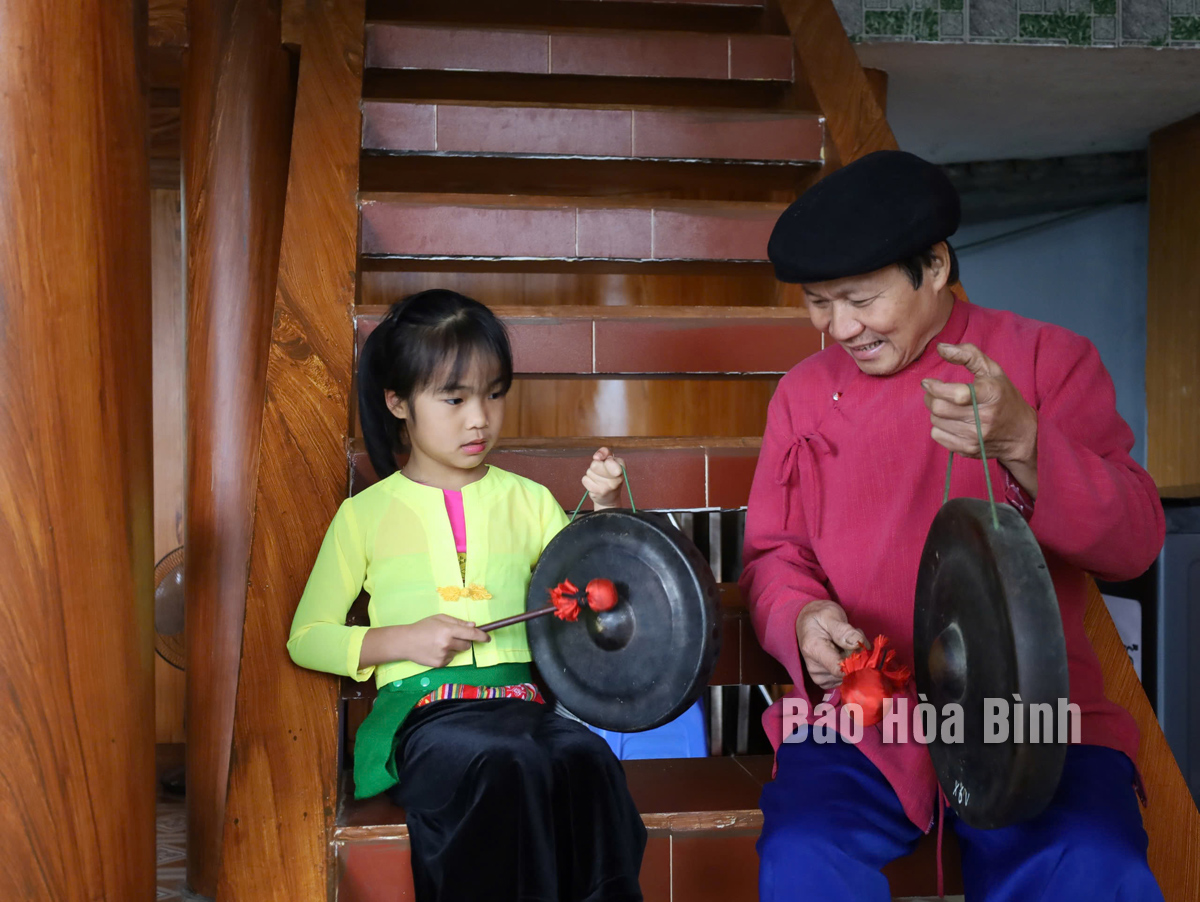



Dedicated artisans like meritorious artist Bui Tien Xo from Vinh Tien commune (Kim Boi district) pass on their passion for Muong cultural heritage to younger generations.
For centuries, the sound of gongs has accompanied important Muong ceremonies including new year blessings, weddings, funerals, traditional communal hunts, house-building, and inaugurations. The rhythms of the gongs help shape the atmosphere like festive, solemn, joyful, or mournful and serve as a communication tool to announce urgent events like natural disasters or family mourning.
Gongs are also used to inspire unity and morale, and once symbolised authority and power, especially in the hands of local chieftains. Played in structured patterns, Muong gongs produce unique, resonant melodies that stir deep emotions.
To the Muong people, gongs are sacred family heirlooms, passed down through generations. According to local authorities, there are over 11,000 gongs across the province, concentrated in the four major Muong regions, including Bi (Tan Lac), Vang (Lac Son), Thang (Cao Phong), and Dong (Kim Boi) and other districts like Luong Son, Da Bac, and Hoa Binh city.
In recent years, the province has taken steps to preserve and promote gong culture. Numerous gong clubs have been established, and passionate individuals such as Bui Ngoc Thuan (Cao Phong), Bui Huy Vong (Lac Son), and others have devoted themselves to researching, teaching, and reviving traditional gong practices for younger generations.
Muong gong culture remains vibrant, featured in major festivals such as the Khai Ha festival, fish-catching rituals, new year blessings, weddings, harvest celebrations, military conscription days, and national unity days. Iconic gong piecessuch as "Welcoming Guests,” "On the Road,” and "White and Yellow Flowers”, are being embraced by youth. Researchers have now recorded 50 traditional gong melodies.
Hoa Binh’s gongs have also gained national and international recognition. A 1,500-performer gong ensemble at the province’s 125th anniversary in 2011 set a Vietnamese Guinness record. In 2016, 2,000 artisans performed in another record-setting event. Most recently, at the 2022 "Hoa Binh – Sounds of Muong” carnival, over 200 performers showcased this living tradition.